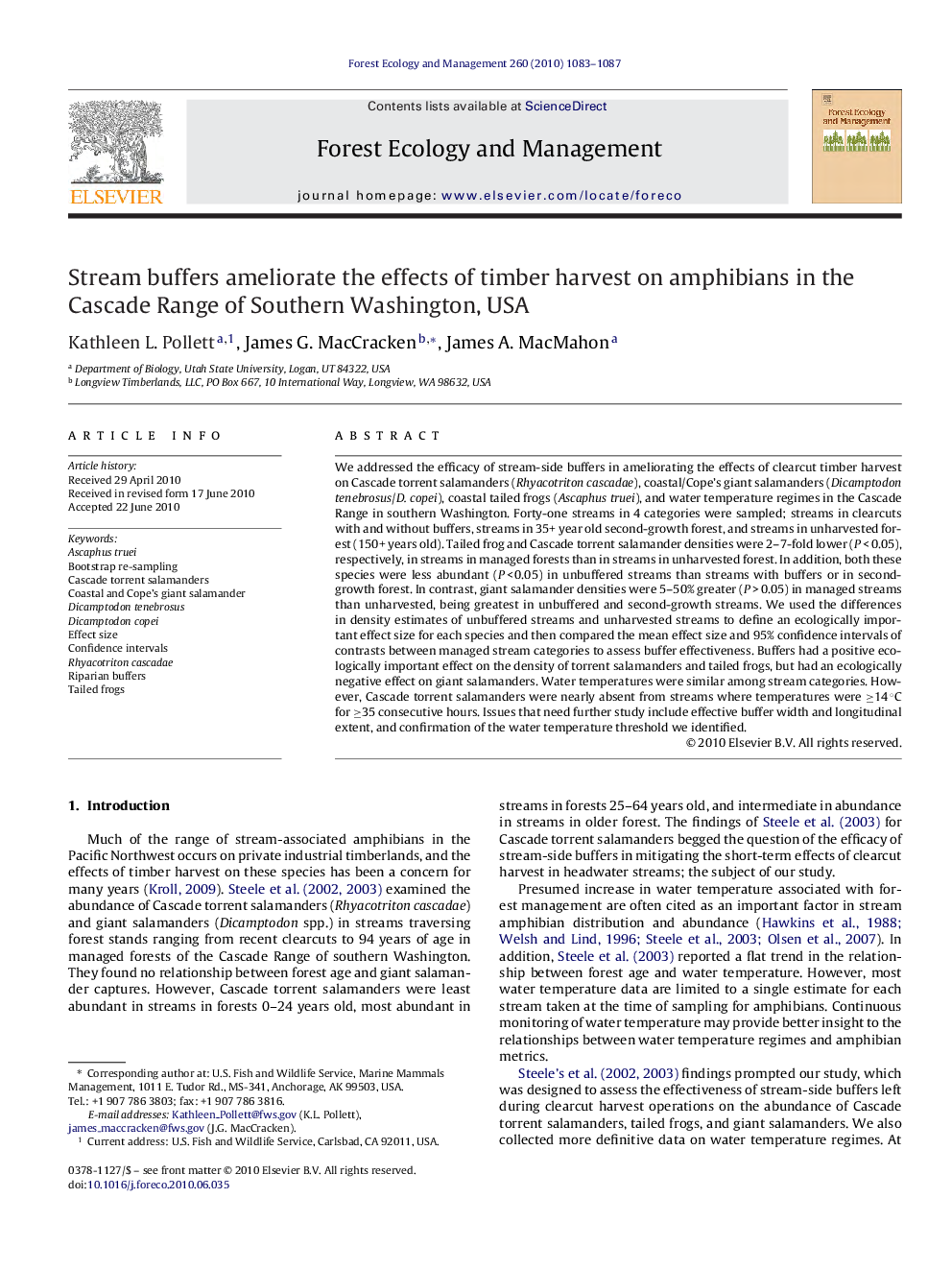| Article ID | Journal | Published Year | Pages | File Type |
|---|---|---|---|---|
| 88435 | Forest Ecology and Management | 2010 | 5 Pages |
We addressed the efficacy of stream-side buffers in ameliorating the effects of clearcut timber harvest on Cascade torrent salamanders (Rhyacotriton cascadae), coastal/Cope's giant salamanders (Dicamptodon tenebrosus/D. copei), coastal tailed frogs (Ascaphus truei), and water temperature regimes in the Cascade Range in southern Washington. Forty-one streams in 4 categories were sampled; streams in clearcuts with and without buffers, streams in 35+ year old second-growth forest, and streams in unharvested forest (150+ years old). Tailed frog and Cascade torrent salamander densities were 2–7-fold lower (P < 0.05), respectively, in streams in managed forests than in streams in unharvested forest. In addition, both these species were less abundant (P < 0.05) in unbuffered streams than streams with buffers or in second-growth forest. In contrast, giant salamander densities were 5–50% greater (P > 0.05) in managed streams than unharvested, being greatest in unbuffered and second-growth streams. We used the differences in density estimates of unbuffered streams and unharvested streams to define an ecologically important effect size for each species and then compared the mean effect size and 95% confidence intervals of contrasts between managed stream categories to assess buffer effectiveness. Buffers had a positive ecologically important effect on the density of torrent salamanders and tailed frogs, but had an ecologically negative effect on giant salamanders. Water temperatures were similar among stream categories. However, Cascade torrent salamanders were nearly absent from streams where temperatures were ≥14 °C for ≥35 consecutive hours. Issues that need further study include effective buffer width and longitudinal extent, and confirmation of the water temperature threshold we identified.
Research highlightsThis study found that stream buffers were effective in reducing the impact of clearcut harvest on 2 species of stream-associated amphibians in Washington. However, 1 species was more abundant in streams without buffers. We also identified a stream temperature regime that influenced stream occupancy by 1 species in terms of maximum temperature and duration, which has not been previously identified.
